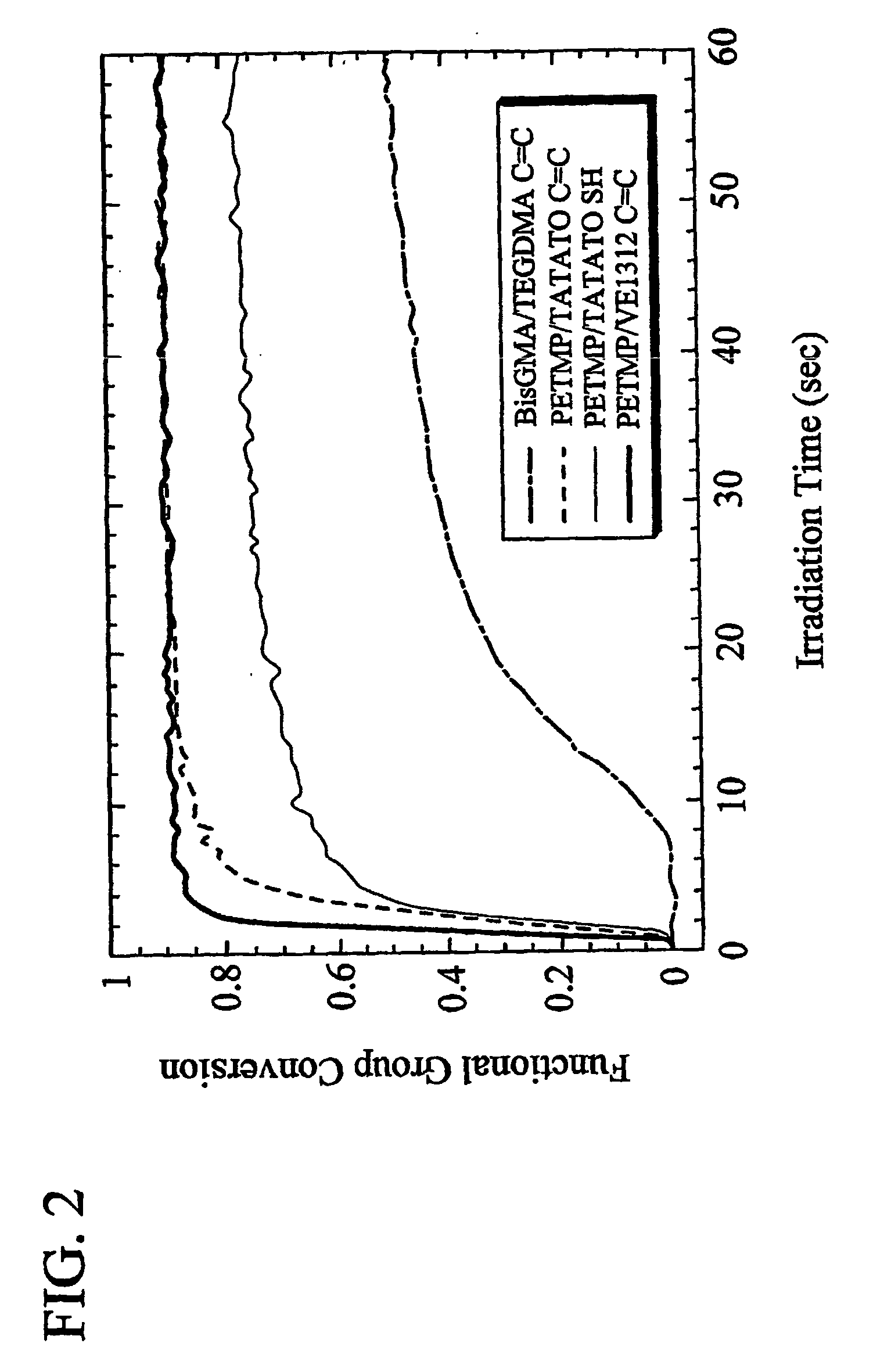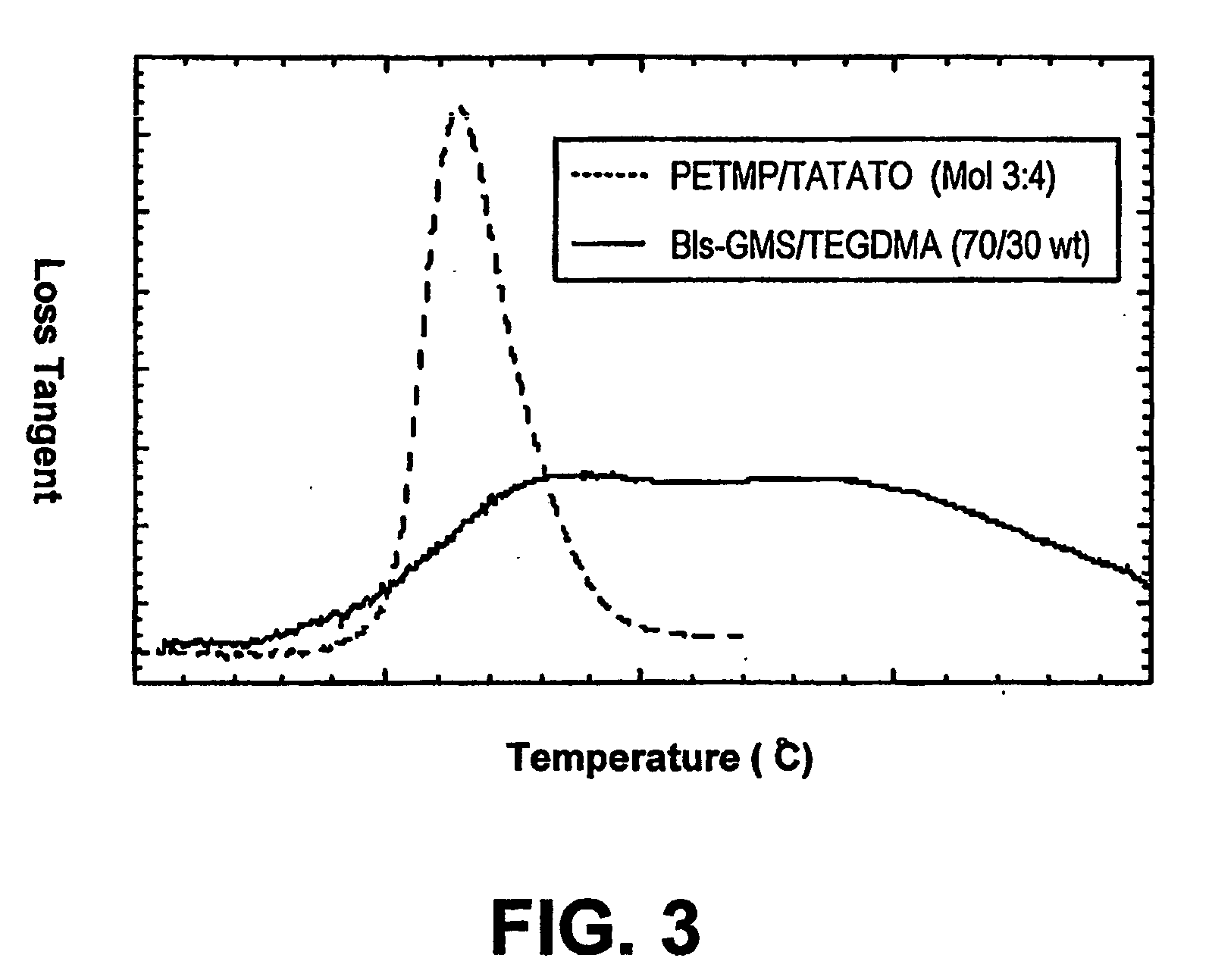Novel photopolymers and use in dental restorative materials
- Summary
- Abstract
- Description
- Claims
- Application Information
AI Technical Summary
Benefits of technology
Problems solved by technology
Method used
Image
Examples
examples
[0039] Experimental work on the thiol-ene polymer embodiments as dental restorative materials was performed to demonstrate the feasibility and advantages of these polymers over currently used dental restorative materials. More specifically, the following monomers were studied:
Pentaerythritol tetramercaptopropionate (PETMP)
Triallyl-1,3,5-triazine-2,4,6-trione (TATATO)
1-Octanethiol
1,6-Hexanedithiol
Triethyleneglycol divinyl ether (TEGDVE)
Dodecyl Vinyl ether (DDVE)
[0040] In addition, the following methacrylate system was used as a comparison:
2,2-Bis[4-(2-hydroxy-3-methacryloyloxypropyloxy)phenyl]propane (Bis-GMA)
Triethyleneglycol dimethacrylate (TEGDMA)
[0041] The various systems above were polymerized under various conditions and the resulting polymers were tested. These included PETMP / TATATO (Molar ratio: 3:4); PETMP / VE1312 (Molar ratio: 3.4:4); PETMP / Bispheonl A Divinylether (DVEBPA) (Molar ratio 1:2); and 2,4,6-trioxo-1,3,5-triazina-triy (triethyl-tris (3-me...
PUM
| Property | Measurement | Unit |
|---|---|---|
| Fraction | aaaaa | aaaaa |
| Fraction | aaaaa | aaaaa |
| Fraction | aaaaa | aaaaa |
Abstract
Description
Claims
Application Information
 Login to View More
Login to View More - R&D
- Intellectual Property
- Life Sciences
- Materials
- Tech Scout
- Unparalleled Data Quality
- Higher Quality Content
- 60% Fewer Hallucinations
Browse by: Latest US Patents, China's latest patents, Technical Efficacy Thesaurus, Application Domain, Technology Topic, Popular Technical Reports.
© 2025 PatSnap. All rights reserved.Legal|Privacy policy|Modern Slavery Act Transparency Statement|Sitemap|About US| Contact US: help@patsnap.com



